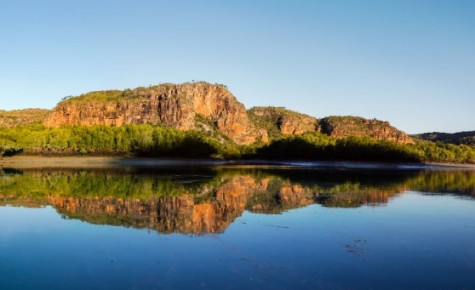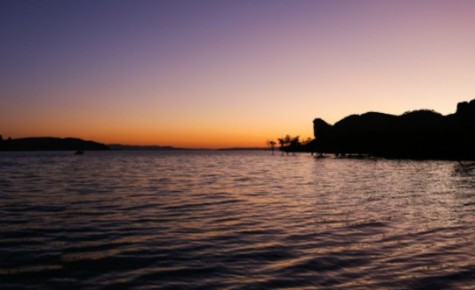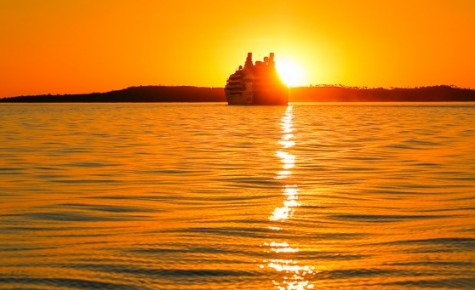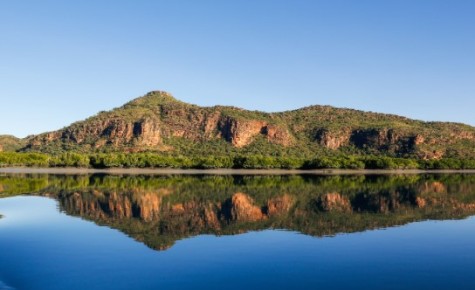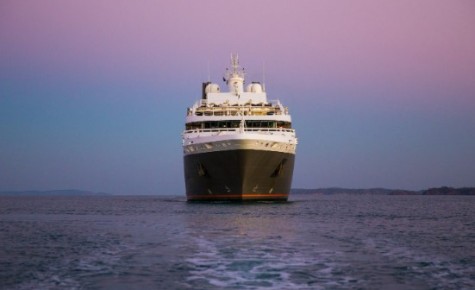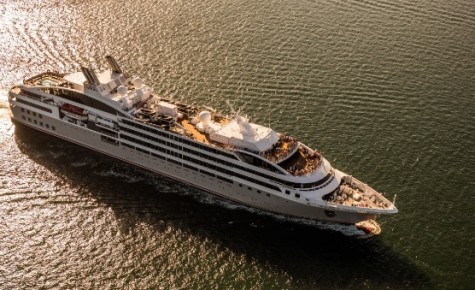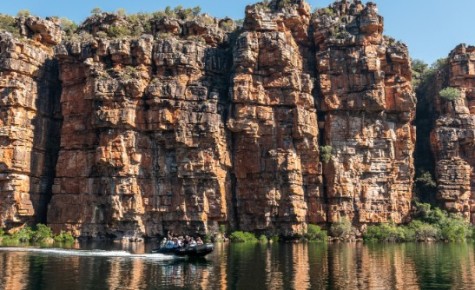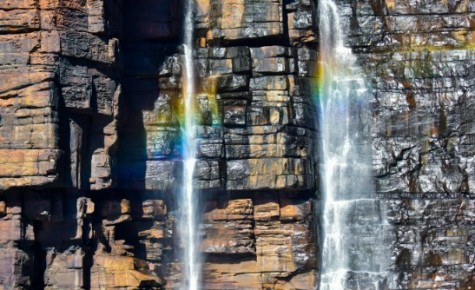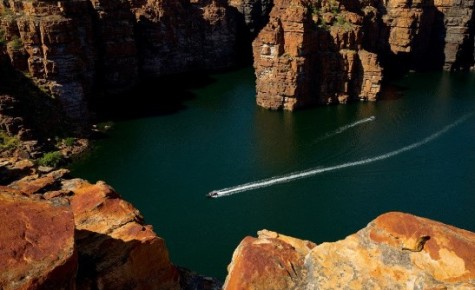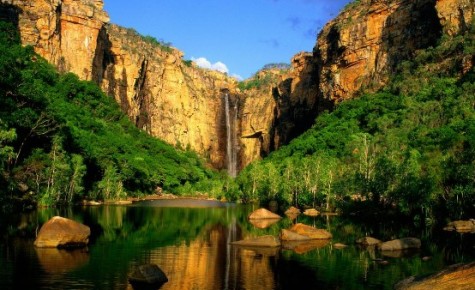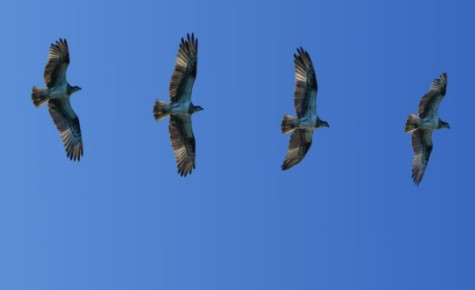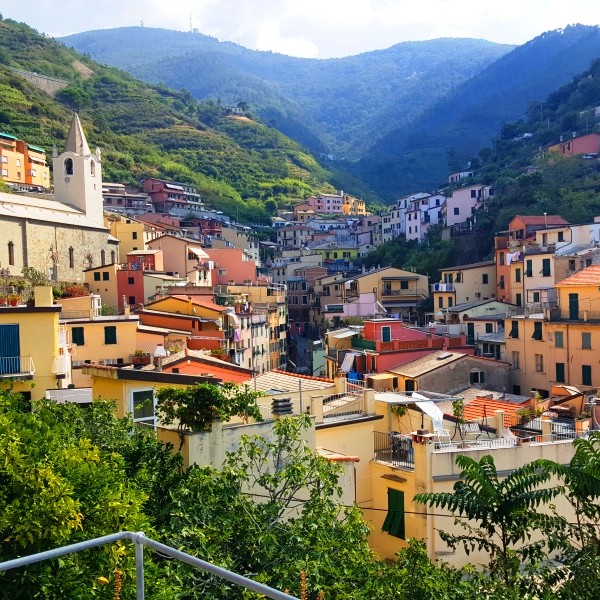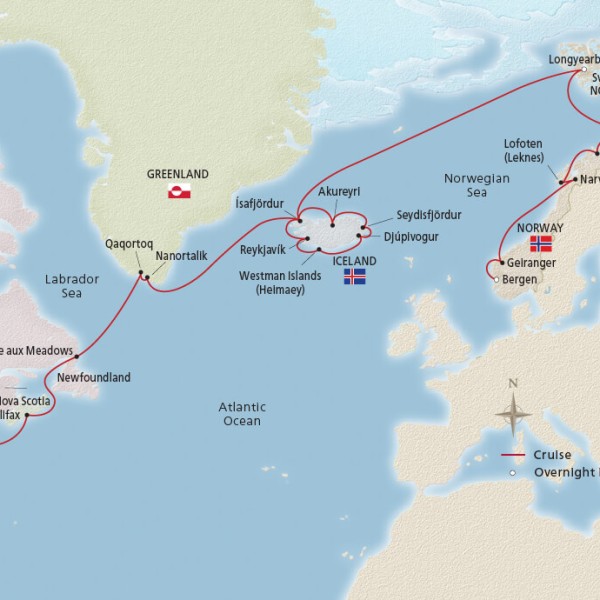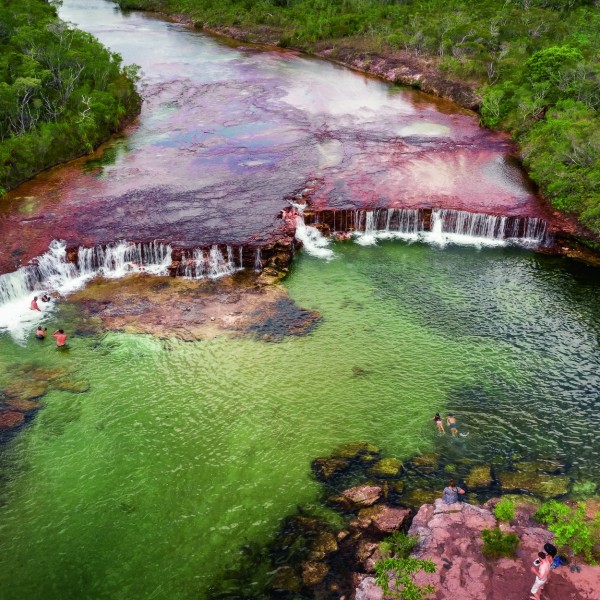Overview
We are very excited to offer this new tour to a region that is one of the most remote and beautiful in all of Australia. Cruising the Kimberley really is a special experience, and August is the time to be there. Saltwater crocodiles, mangroves, waterfalls and amazing sunsets.
Ponant Le Jacques Cartier :An elegant appearance and refined interior design combine with cutting-edge technology to offer a new type of cruising: adventure in a luxury setting. With only 184 guests and 118 crew the service is impeccable.There is an open bar on board included, room service and entertainment.
Other tour highlights:
- Darwin for 2 nights
- Kakadu National Park for 1 night and the Yellow Water Billabong Cruise
- Ritz Carlton Resort in Perth for 2 nights
- Lacepede Islands – Green Turtles
- Collier Bay
- Hunter River – Kampamantiya
- Careening Bay
- Ashmore Reef
- Vansittart Bay
- King River Gorge
ITINERARY
Tuesday 27 August New Zealand – Darwin
We commence the tour with a flight to Darwin from Auckland. On arrival, we are transferred to our city hotel for a 2-night stay.
Wednesday 28 August Darwin (B.D)
After our late arrival last night, we relax this morning. Our afternoon sightseeing tour is a perfect introduction to Darwin. We see the lush Botanic Gardens and tour the historic sights of the city including the East Point Military precinct, an area rich in World War II memorabilia. We see the Stokes Hill Wharf area and the Mooring Basin. Tonight, we get together for our welcome dinner cruise on Darwin Harbour which will hopefully present us with fantastic views of a fiery sunset.
Thursday 29 August Darwin – Kakadu National Park (B.L.D)
Today, we are up early to get started on a day you will long remember. Covering an area of almost 20,000 square kilometers, World Heritage listed Kakadu National Park offers one of the most diverse landscapes you will ever experience with mangrove fringed coastal areas, expansive flood plains, lowland hills, open woodland, and forest habitats. Be amazed at the population of wildlife in the water, on the land and in the air. Highlights of the day include: The Yellow Water Billabong Cruise, home to thousands of saltwater crocodiles and up to 60 species of colourful birdlife; after lunch at Cooinda, Warradjan Aboriginal Cultural Centre where artefacts and videos illustrate stories of the traditional owners ranging from personal stories to “bush tucker”; Nourlangie which provided shelter to indigenous people for many thousands of years and where the rock art illustrates their deep spiritual culture. There is even an opportunity for a spectacular scenic flight (additional cost) over the Arnhem Land Escarpment. We overnight at Kakadu.
Friday 30 August Kakadu National Park – Darwin (B.D)
After a big day yesterday, we have a leisurely departure from our hotel in Kakadu, before returning to Darwin and joining our cruise ship, Le Jacques Cartier.
Saturday 31 August King George River (B.L.D)
The journey up the King George River is nothing short of breath-taking. The 80-metre-high sides of the gorge display varying degrees of weathering of the ancient Warton sandstone. The colours and textures of the gorge change with the light as we travel further up the river creating a continual changing scenery that is simply stunning. The journey culminates at the King George twin falls; the highest single drop falls in the whole of the Kimberley (80 m or 260 ft). Fed by wet season run-off the level of water cascading over the falls varies from year to year. Our Expedition Team will escort us in either the Zodiacs or ships tenders to the foot of the twin falls and explain all about the stunning geological formations of the canyon.
Sunday 01 September Vansittart Bay (B.L.D)
Jar Island contains ancient rock art galleries depicting the Gwion Gwion style unique to the Kimberley region. Mainly neglected by, or unknown to, the early European researchers of Aboriginal culture in the Kimberley in favour of the dominant and more dramatic Wandjina art, Gwion Gwion art has in recent years gained world prominence. It is generally thought that this art may extend back to over 30,000 years before our time and represents the first wave of seagoing colonisers of the Australian continent. As it is, these are the oldest detailed depiction of human figures in the world. You can join our Expedition Team ashore for a short walk, past some fascinating rock formations, to the site of the Gwion Gwion art galleries.
Monday 02 September Ashmore Reef (Technical Stop) (B.L.D)
Located 600km North of Broome, on the edge of the continental shelf, Ashmore reef consists of 3 low-lying tropical islands surrounded by coral reef. The islands have a combined land area of approximately 54 hectares and are a designated important bird area (IBA). Visitation to Ashmore reef and Islands is strictly controlled and most of the reef is designated as a sanctuary zone where access is prohibited. Our visit to Ashmore reef is required to ensure we comply with Australian government regulations. Should weather, sea and tide conditions permit there may be an opportunity to undertake a zodiac tour to the vicinity of West Island.
Tuesday 03 September Careening Bay (B.L.D)
Careening Bay was named by Lieutenant Phillip Parker King after his ship, HMC Mermaid, was careened there during his third voyage of discovery in 1820. King surveyed the western coast to complete the map initiated by Flinders 20 years earlier. The Mermaid had been leaking badly and King needed to find a shallow sandy bay where he could careen his boat to undertake repairs. At a high tide, on a warm September afternoon, he ran the Mermaid onto the sands. For ten days the Mermaid crew worked hard before refloating the vessel. The ship’s carpenter carved the name of the vessel and the year into a conspicuous boab tree. The famous boab tree is now 3 metres wide and National Heritage listed. A reminder of a by gone era of exploration!
Wednesday 04 September Swift Bay (B.L.D)
The Bonaparte Archipelago is a stunningly rugged maze of islands stretching almost 150 km along Western Australia’s remote Kimberley coast. Its colour and scale conspire to take ones’ breath away. Its distant location has meant it has remained an unspoilt and remarkably pristine location to explore and experience. Phillip Parker King named “Swift’s bay” after Jonathon Swift (1667-1745) the author of Gulliver’s travels. The ‘T’ shaped bay is composed of heavily fractured sandstone providing an abundance of rock shelters. On the walls of these shelters are examples of both Wandjina and Gwion style rock art. Our Expedition Team will take us ashore for a guided walk to a number of rock art galleries depicting these unique rock art styles.
Thursday 05 September Hunter River (B.L.D)
Arguably one of the most scenic parts of the Kimberley coast, Prince Frederick Harbour and the Hunter River are lined with ancient rainforest pockets, pristine mangroves, and mosaic sandstone cliffs. They are considered to be some of the most pristine mangrove forests in the world, containing up to 18 different species, supporting a rich and diverse fauna. The sandstone escarpment at the river mouth, known as “Kampamantiya” rises over 200 metres high before giving way to extensive mud banks and mangrove forests home to numerous bird species and the iconic saltwater crocodile. Our expert Expedition Team will share their knowledge with us as we explore this pristine mangrove environment by Zodiac, keeping a constant lookout for wildlife. There is also the opportunity to reach the Mitchell Falls by helicopter from Naturalist Island beach, should you wish (additional cost).
Friday 06 – Saturday 07 September Collier Bay (B.L.D)
Lying to the east of the Buccaneer archipelago, the ancient landscapes of Collier Bay have been shaped by the massive tidal movements the region is renowned for, creating a photographer’s paradise. With a tidal range exceeding 14 metres, recorded near Yule entrance at the southern end of the bay, they are among the largest in the world. This massive daily movement of water creates unique phenomena that occur nowhere else in the world. Nestled in the centre of the Bay is Montgomery Reef, the world’s largest inshore reef system. As the tide falls a raging torrent of water cascades off the top of the reef, creating turbulent ‘rivers’ and mini waterfalls. At the Southern end of the Bay, Talbot Bay is home to the world’s only ’Horizontal Falls’ described by Sir David Attenborough as “One of the greatest wonders of the natural world.” Hidden in the many caves and grottos of this ancient landscape are a multitude of ancient Rock Art galleries. Here you can find spectacular examples of the Wandjina and Gwion Gwion styles.NB: As we are at the mercy of weather and tide conditions in this region, the activities mentioned above are only possible experiences and can’t be guaranteed.
Sunday 08 September Lacepede Islands (B.L.D)
The Lacepede Islands are Western Australia’s most important breeding habitat for Green Turtles (Chelonia mydas) and have been named by Bird Life International as an Important Bird Area (IBA). The breeding colony of Brown Boobies is possibly the largest in the world. Up to 20,000 Roseate Terns have also been recorded here. Other birds breeding on the islands include Masked Boobies, Australian Pelicans, Lesser Frigatebirds, Eastern Reef Egrets, Silver Gulls, Crested, Bridled and Lesser Crested Terns, Common Noddies, Pied and Sooty Oystercatchers. We’ll join our Expedition Team for a guided Zodiac tour to view the prolific wildlife. Due to the sensitive nature of the environment, landings are prohibited on the Lacepede Islands.
Monday 09 September Broome – Perth (B)
Sadly, we disembark our cruise ship for the last time this morning. We head to the airport and join our flight to Perth. The Ritz Carlton Hotel Perth will be our home for the next two nights.
Tuesday 10 September Perth (B.D)
A free day to relax and the enjoy the resort, or head into town for some shopping. There is plenty to do and see in Perth, the choice is yours. Our final dinner together this evening.
Wednesday 11 September Perth – Auckland (B)
We head to the airport today to join our flights back home.
Images courtesy of Maher Escorted Tours





